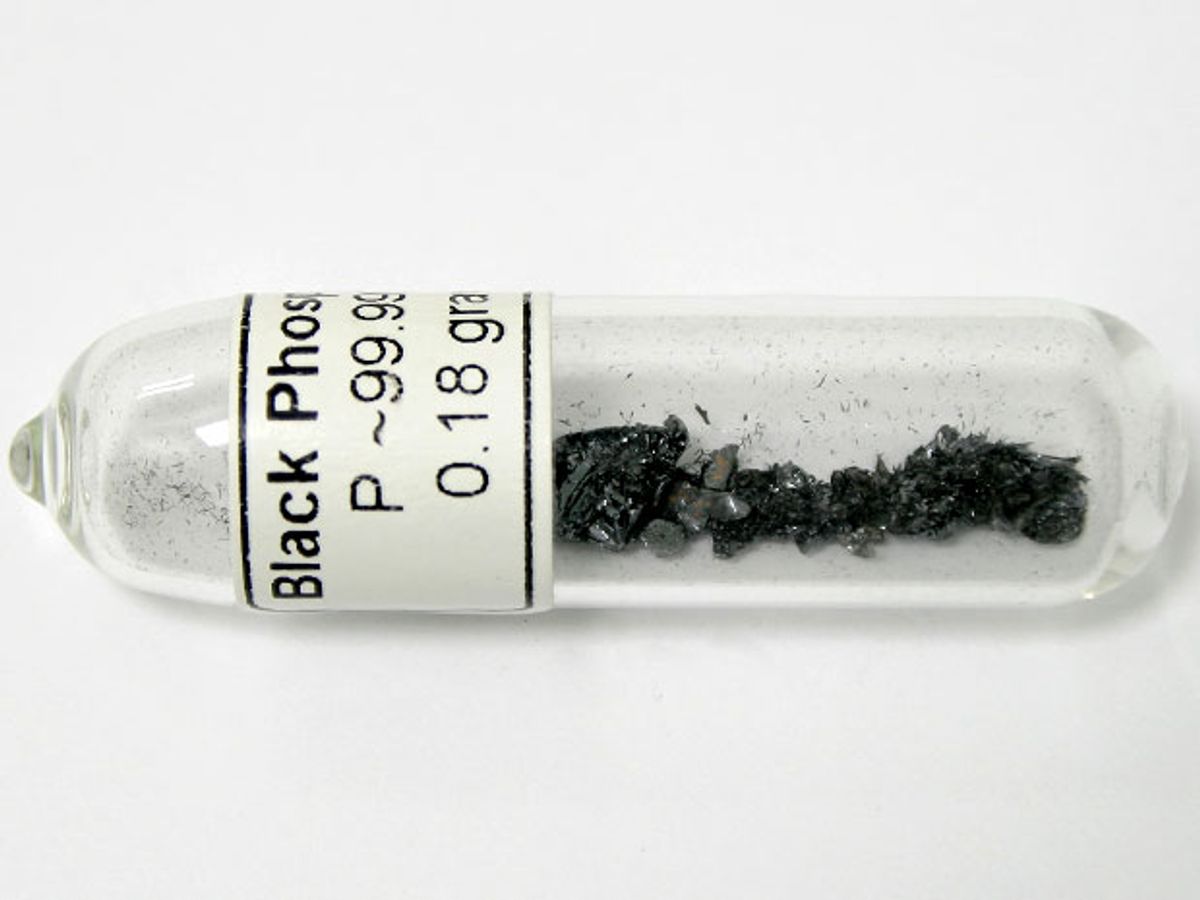
A little over a two-and-a-half years ago, a material known as black phosphorus, which had been synthesized by chemists over a hundred years ago, suddenly garnered new interest.
In a series of papers, published in the first half of 2014, researchers were able to exfoliate black phosphorus into very thin films of only about 10 to 20 atom-thick layers. The result has been that black phosphorus has now become the new darling of two-dimensional (2D) materials and the next hope for a post-silicon world.
News last year that joint research among the Technical University of Munich (TUM), the University of Regensburg in Germany and the University of Southern California (USC) had fabricated for the first time a field-effect transistor made of black phosphorous seemed a watershed moment. It even inspired Arrow Electronics, a major electronic component distributor and thought leader on both current and emerging electronics technologies in the space, to note the benefits of black phosphorus over other 2D materials, namely graphene.
The excitement for black phosphorous, which has also been dubbed “phosphorene” in reference to its 2D cousin graphene, stems mainly from the fact that it has an inherent band gap that graphene lacks naturally. A band gap is an energy band in which no electron states can exist and is essential for creating the “on/off” flow of electrons that are needed in digital logic electronics.
It’s one thing to have a band gap, but it is the quality of black phosphorus’s band gap that makes it so attractive. Its direct bandgap (~0.3 to 2.0 electron Volts (eV)) covers a regime otherwise unavailable from all other 2D layered materials. It bridges the band gap ranges between that of graphene (zero band gap) and transition metal dichalcogenides (TMDCs, ~1.5 to 2.5eV).
Crucially, the band gap of black phosphorous corresponds to the optical wavelength in the range of 0.6 to 4.0 microns, covering the visible to infrared range.
“Since optoelectronic functions, including light absorption, emission, and modulation, of semiconductor materials depend on the size of the band gap, black phosphorus is very promising for a range of photonic applications,” said Mo Li, professor at the University of Minnesota, whose research has been highlighted in IEEE Spectrum, in an e-mail interview last year. “Particularly, narrowband semiconductors are used for infrared detection, a very important application for optical sensing, night vision and biomedical diagnosis.”
The potential applications for black phosphorous are not limited to photonics and infrared detection, however. There have been various research projects that have aimed at tuning the band gap of black phosphorus that should expand its capabilities.
“Not only does its band gap bring infrared functions to 2D optoelectronic nanodevices,” explained Philip Feng, an assistant professor at Case Western University, and a leading researcher in the field, in an e-mail interview. “But also the direct band gap is highly tunable with number of layers, greatly enhancing device capability.”
As Jean Jacques Meneu, an application marketing manager for Arrow Electronics, has noted, the percentage with which the black phosphorus is doped with arsenic can alter its band gap. By changing its band gap in this way, it becomes possible to make the material extremely sensitive to the presence of a variety of gases.
Feng also points out that in addition to its band gap, black phosphorus possesses an intrinsic, strong in-plane anisotropy, which means its properties are directionally dependent.
“This in-plane anisotropy is not readily found in other 2D crystals derived from layered materials,” said Feng. “This can be manifested in the optical, electrical, thermal, and mechanical properties of the resulting devices, and has potential for a number of novel applications.”
Scaling Up Production and Other Hurdles
Currently, black phosphorus crystal is synthesized from red phosphorus under high pressure (1 gigapascal) and high temperature (1000 Celsius). The resulting small crystals (in millimeter sizes) are exfoliated into small flakes for making black phosphorus nanostructures and nanoscale devices.
This production method is clearly not scalable for industrial production. Ideally, for black phosphorous to reach its potential a roll-to-roll production technique will need to be developed in which black phosphorus can be grown or coated uniformly on substrates.
While methods have to be devised that can scale up the production of black phosphorus, it has some troubling issues once you manage to produce it. Chief among these problems is its chemical instability.
“When exposed in air, black phosphorous film degrades within a few hours, due to reaction with water vapor and oxygen in air,” explained Li. “Luckily, many inert materials can be used as passivation to preserve black phosphorous devices for weeks or longer.”
Future Research Directions
Before concerns about scaling up production become paramount, research is still discovering the unique properties of black phosphorus. Based on the range of properties that have been characterized thus far for black phosphorus, much of the research to date has been focusing on nanoelectronic and nanophotonic applications.
However, researchers like Feng are looking at the unique mechanical and coupled electromechanical properties of black phosphorus.
“We believe black phosphorus can have strong potential for enabling novel mechanical devices and transducers, especially new 2D nanoelectromechanical systems (NEMS),” said Feng. “Recently, we have demonstrated the first high-frequency black phosphorus NEMS resonators.”
In this latest work with NEMS resonators, Feng and his colleagues discovered that unique in-plane anisotropy of black phosphorus 2D crystals can lead to totally new elastic and frequency scaling capabilities in multimode black phosphorous NEMS resonators. It would seem the continued characterization of its properties will lead to the best applications for black phosphorus.



